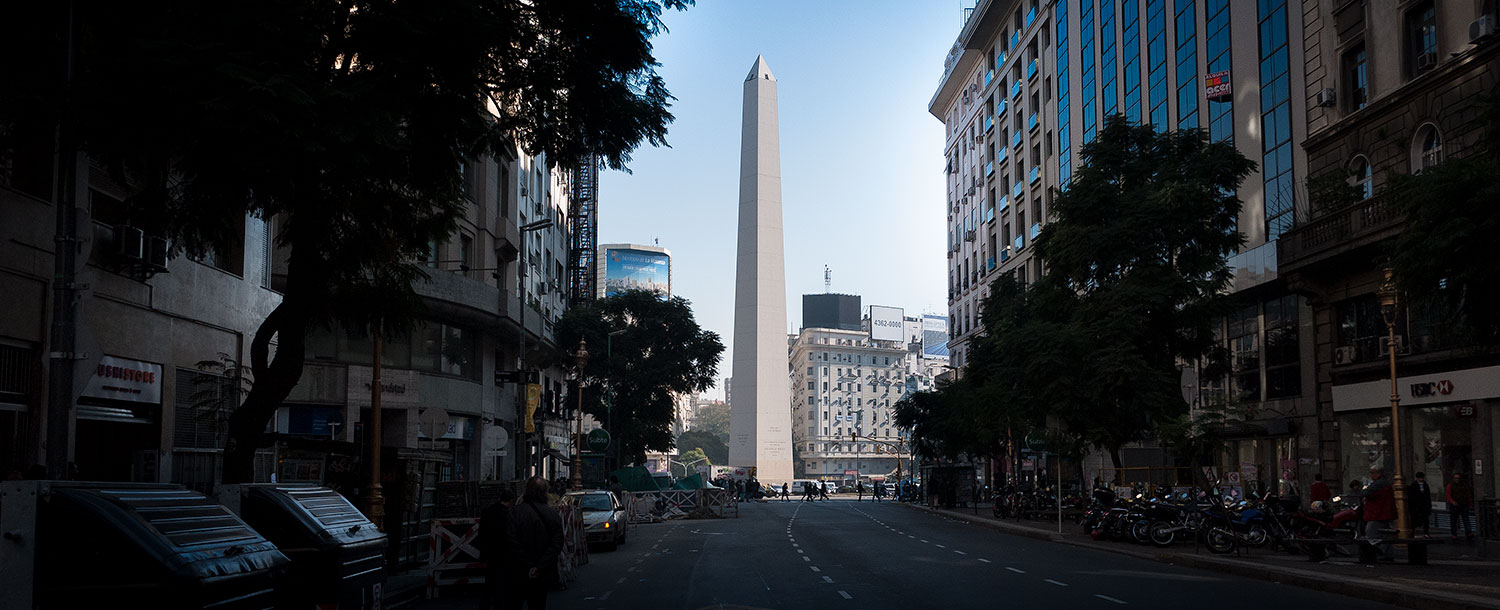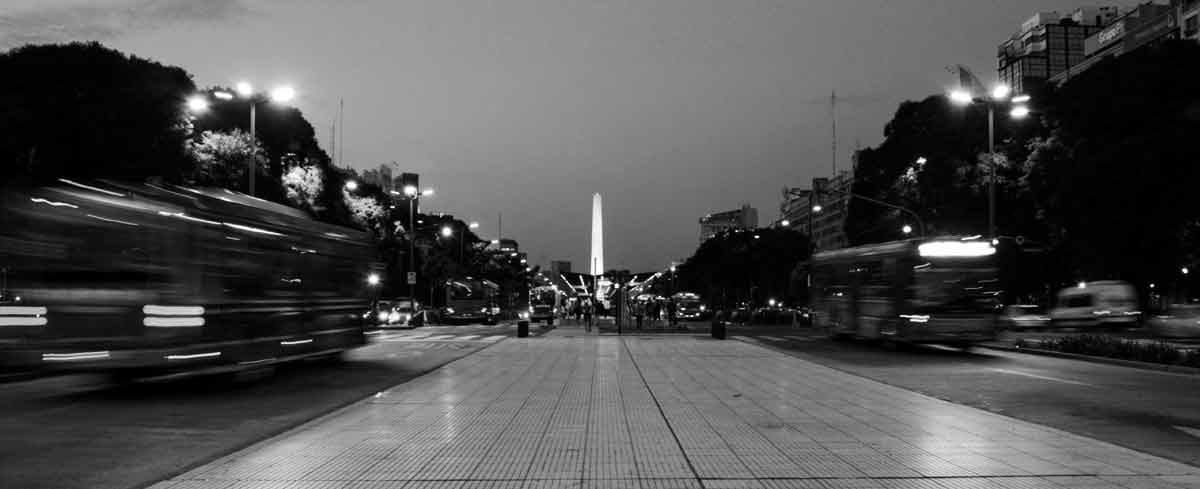The obelisk
Present in tours
The iconic Obelisco de Buenos Aires stands at the intersection of two of the city’s most important streets, Avenida 9 de Julio and Avenida Corrientes. The former is often credited as being the widest street in the world, with an incredible 16 lanes at some points, while the latter became famous as the street that never sleeps, home to Buenos Aires' main theatres and many pizzerias that open way into the early hours.
The monument itself was erected in 1936 to commemorate the fourth centenary of the first foundation of Buenos Aires by Pedro de Mendoza in 1536, and it marks the spot where the Argentine national flag was raised in the city for the first time. Measuring 67.5 metres in height, the obelisk was was designed by Argentine modernist architect Alberto Prebisch, who also designed the Gran Rex Theatre, which can be found nearby at Corrientes 857. Each side of the obelisk is 8.8 metres wide.
The obelisk has since become a symbolic icon of the city, marking a strategic central point - three of the city's underground metro lines connect underneath the obelisk and the Metrobus dedicated bus corridor passes at street level - while the monument is also a beacon that is often the central focal point for everything from sporting celebrations to political demonstrations.
Inside the structure, there is a ladder with 206 steps and seven resting places leading up to the viewing platform, which has windows on each of the four sides (closed to the public). There's a lightning rod on the very top of the pyramid.
Curiosities
What has become one of the best-known landmarks in the city was not always popular with residents. In fact, there was so much initial resistance to the monument that three years after its inauguration, the city authorities sanctioned its demolition, a decision that was finally vetoed by the city's mayor of the time. The obelisk has since been the protagonist of several artistic and political interventions over the years, including installations by Marta Minujín and Leandro Erlich, and for international AIDS awareness day.
See more highlights of San Nicolás neighbourhood.





